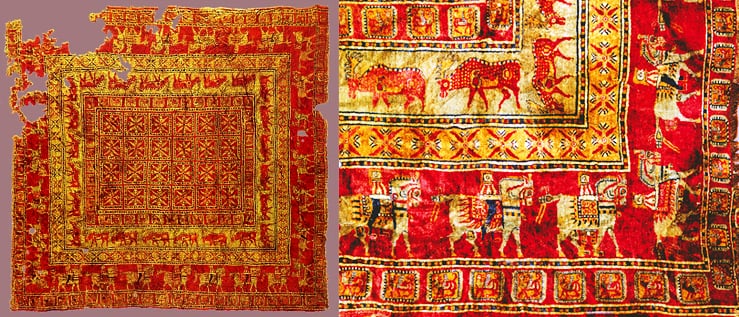Our hand-woven carpets, which decorate our living spaces, color the place, and give a feeling of warmth, have an important place in human history. Undoubtedly, hand-woven carpets, which are the product of thousands of threads and labor woven many times, always continue to stand out.
Hand-woven carpets are environmentally friendly products because they are produced from organic materials such as natural wool, cotton and yarn. Additionally, their durable structure ensures their longevity.
While each weaving process can be considered a work of art, these carpets also keep alive and reflect the cultural heritage of a community. The oldest of the hand-woven carpets, which are part of a living art tradition, is considered to be the Pazyryk Carpet.
Main Known Features of Pazyryk Carpet
The dimensions of the Pazyryk Carpet, which is considered the oldest wool-woven carpet in the world, are known to be 183 x 200 cm. Some tests carried out on the surface of Pazyryk show that the carpet was woven in the 5th century BC.
 Resim Seç
Resim Seç
breakLineThe block can not be displayed correctly.
The technique used in weaving the 2500-year-old Pazyryk Carpet, which has 36 symmetrical loops on each centimeter, indicates that weaving evolution has a long history. There are motifs of deers and men riding horses around the carpet, which has a red central background.
 Resim Seç
Resim Seç
Persian Carpet Tradition
Persian carpet has a deep-rooted carpet tradition. For many years, Iranian weaving masters have passed down hand-woven carpets from generation to generation. In this tradition, village rugs, regional ethnic motifs, woolen carpets, geometric patterns, and vintage carpets come to the fore.
breakLineThe block can not be displayed correctly.

